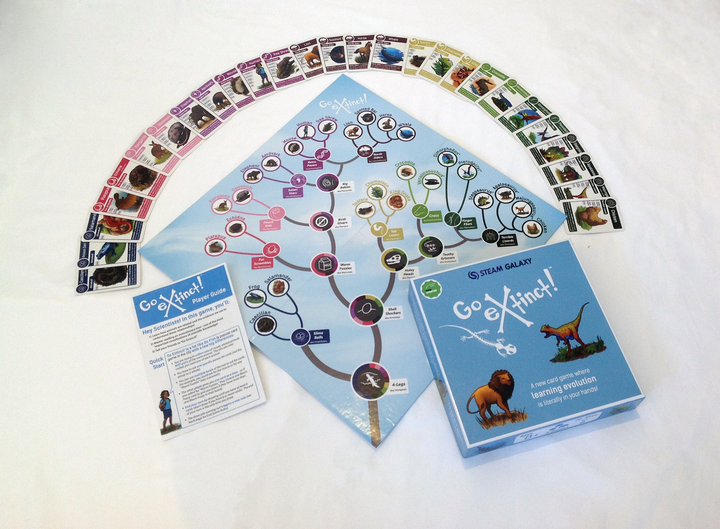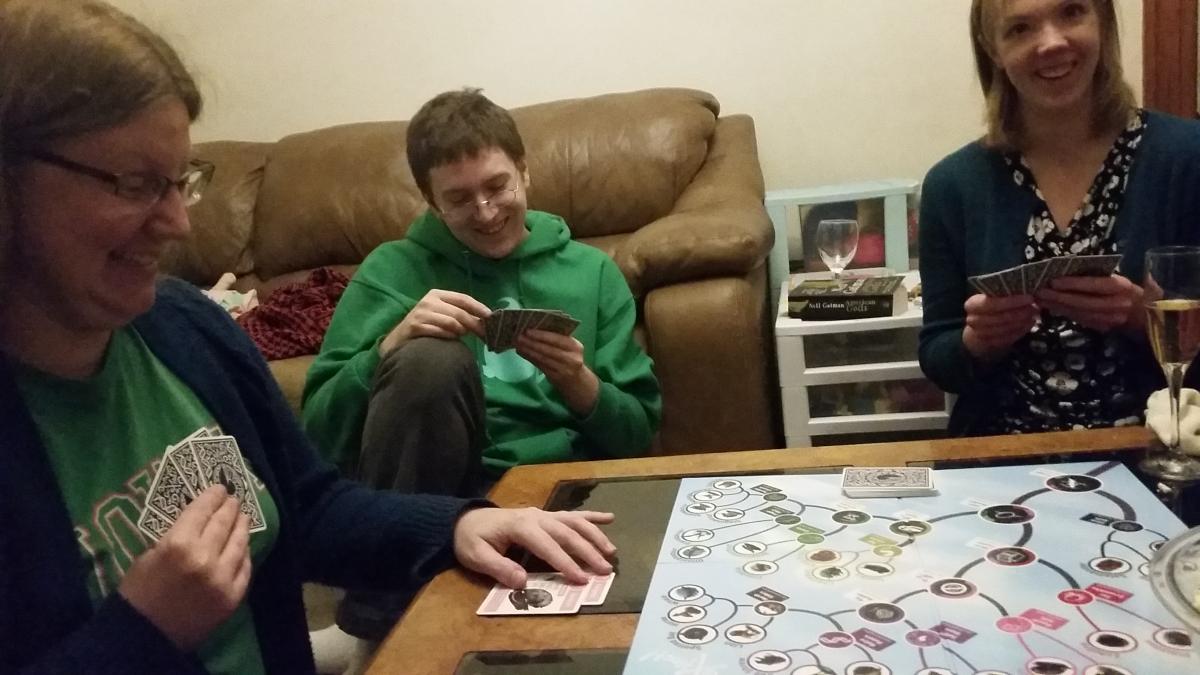NCSE recently learned that there was a new evolution game on the map: Go eXtinct! Of course we wanted to give it a whirl. But would playing it in the office, with a team of evolution experts, be the best way to review the game? Maybe not. We thought it might be fun to try it on people with less background in evolution, to see if the game was truly educational. I agreed to assemble a focus group.
My participants included an artist, a writer with a master’s degree in biology, a pharmacy tech with an interest in game design, a graduate student in public health, and me. All people who are, at the very least, in favor of science…but how many of us had ever taken an evolution course? The unsurprising answer: only me! Most received little or no formal education related to evolution, even though if you averaged our giant pile of degrees, the group was clearly over-educated. Evolutionary theory is essential to understanding the power, scope, and majesty of modern biology. That so many science-positive adults with a lot of years of schooling could not remember learning much about evolution serves to highlight the importance of and ongoing need for NCSE’s work!

But back to the game. The box promised it was suitable for ages 8 and up, so we got our game faces on. We needed to play this game hard enough to beat theoretical kids. As the writer among us said, “When you play kids, you play to win. Bedtime’s on the line”. When we eagerly opened the box, we were pleased to find the contents hilarious. The names given to the different clades, such as “Warm Fuzzies” (aka mammals) and “Holey Heads” (aka Diapsids) were both amusing and interesting: creative ways for all kinds of people to relate to and start understanding clade characteristics.
The goal of the game is to assemble complete clades from among the animal cards. The board displays a visually pleasing, amusingly and accurately named, phylogenetic tree to help you figure out which animals fall in what clade. Gameplay is a little like Go Fish, in that you ask fellow players for cards—although when your target does not have a representative of the clade or species you requested, they must snidely tell you to “Go Extinct!”.
We found the rules easy to learn. We made a few errors in the first round, but had enough fun that we wanted to play a second round right away. The level of strategy involved can get pretty intense. Because you can ask for cards at any depth of clade or for individual species, other players can generally figure out what clades you are trying to assemble. If my experience is any indication, they will be cruel to you and take away your monotremes every single time.
While we enjoyed the game, we all agreed there were some improvements we’d like to see. For starters, we wanted some species-specific information on the species cards, which currently only include clade information. None of us knew what a Majungasaurus was, although we all agreed we really liked saying its name. There are no extinct mammals represented on the tree, only extinct diapsids, which we all agreed could be misleading. Everyone knows dinosaurs are extinct. Including some Ice Age or even more recently extinct mammals would remind players that extinction is an ongoing phenomenon.
From a design perspective, we had an interesting experience in human perception. One of the players is slightly colorblind, but three of the other players found it extremely difficult—or impossible—to tell several colors on the phylogenetic tree apart under normal indoor lighting conditions. The cards have symbols on them, so the colors are not essential for gameplay, but we all agreed clearer color variation would improve the game.
What did we learn from the game? A lot, actually! From studying the tree and the clades, different participants noticed for example that reptiles are more closely related to mammals than they are to amphibians, contrary to what they had thought from appearance. We learned about Earth’s geological history as well as animal evolution, as one of the clades represented the “North Siders”, aka the Laurasiatherians. The “Retro Posers”, or Euarchontoglires, are depicted as including humans, mice, and tree shrews. These relationships are not obvious to a layperson and give a nice lead in for why so much medical science is performed using mouse models. The game’s clade description gives some basic information about retrotransposons and their role in phylogenetic analysis. Some important and serious basic science is presented in a fun and accessible way! At the very least, by the end of the night, everybody knew what a clade was: a concept that seems to elude many undergraduates in evolution courses.

In short? We thought this game was fun, educational, and worth the money. If you like the idea of learning about Earth and life history while tormenting your friends, this game is tops.

